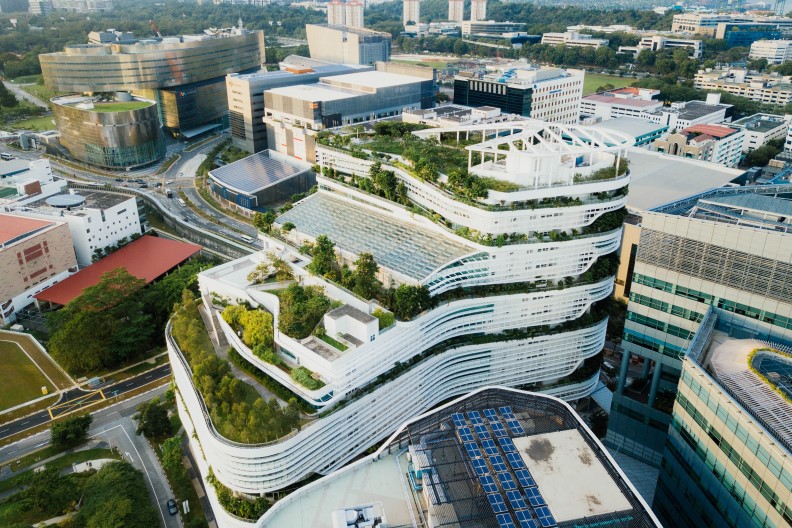Building management is a thankless task. When things are going well, nobody notices.
But when things go wrong, and the conditions in a building are suboptimal, people definitely notice.
Increasingly, technology is able to help in this regard. And one revolution that’s particularly interesting lies in the field of machine learning.
What is machine learning?
Essentially, machine learning is a branch of artificial intelligence. ML-based systems are able to learn from data, identify patterns and make decisions with minimal human intervention. This means devices that use machine learning algorithms can handle millions of data points, much more than humans, and faster than any human being.
Nowhere is this better exemplified than in the world of Building Management Systems (BMS).
These systems have traditionally been set up by humans and based on data gathered by humans.
But machine learning, increasingly, allows the systems themselves to "learn" from data and improve systems accordingly.
This is playing a key part in the rise of so-called ‘smart buildings’ - making continuous improvements in efficiency and performance, saving enormous amounts of money and energy and optimising living standards.
Let’s take a look at 5 ways machine learning is improving BMS…
1. Predicting the Future
Machine learning is all about systems’ ability to make decisions based on data. And one of the key ways it can help in the management of buildings is that it can utilise historical and real-time data, and forecasts on factors such as weather, and outdoor pollution, to predict when it will be optimal to use different HVAC settings.
So, on a basic level, a machine-learning enabled building management system is able to ensure compliance with ASHRAE’s Standard 55 - Thermal Environmental Conditions For Human Occupancy - in a proactive way, much more effectively than a reactive approach.
But, equally, with the right sensors in place, a system can identify ‘live’ patterns and trends. For example, if an office building is across the road from a large school, the system might identify spikes in air pollution around 9am and 3pm - at drop off and pickup time.
In turn, the system could then renew and recycle the air in advance of this to ensure pollution is mitigated, and less energy is required to deal with spikes during, or after, the time when they occur.

Machine learning allows for automatic responses to spikes in indoor air pollution, even if the source is outside.
2. Increased Comfort
Traditional building management systems are run by rules-based programming. A simple example of this would be to keep the temperature to 20°C at all times, or keep it to 20°C between the hours of 9am and 5pm, for example.
Sometimes, though, this is not enough - for example, they may not have taken into account that it was due to be a particularly hot day. By contrast, though, AI systems would be able to allow for this, injecting more fresh, cold air from the night before into the building, early, regulating the temperature in a vastly more efficient way.
Also, with machine-learning powered systems, you can programme in ‘priorities’ to follow instead of simple tasks. For instance, you can move the cursor if you have several different goals, like energy saving goals and thermal comfort goals. This way you tell the system what's most important for you and the occupants.
This could also happen with lighting. Lighting management has been done right for a number of years because it’s simple. Building management systems are able to manage lighting automatically, based on daylight sensors and rules configured within the system. But anything more complex cannot be achieved with the same sort of control systems.
Boost productivity and worker satisfaction in your office while you keep energy bills small.
Learn more about what our Ai can do for you and your business.
3. More Efficiency - Better Environmental Sustainability
As well as adjusting systems in your building to increase comfort and ensure safe pollution levels, machine learning can also increase efficiency.
For traditional HVAC systems, the only real settings you have are to have products ‘always on’ or on a timer-basis. Of course, this means that products are often working hard when they don’t need to be. Each appliance has its own carbon footprint, which is proportionate with its use. So, in simple terms, using these appliances less is better for the environment, using up less energy.
Businesses of all shapes and sizes are now recognising this as an opportunity to reduce energy usage, aiding the environment and - of course - reducing costs. For example, Pizza Hut expects an 18% reduction in average monthly energy usage between now and 2022 thanks to advanced IoT.
Microsoft’s 88 acres project is another fantastic example of a company investing in IoT and machine learning to slash costs and increase efficiency.

AI considers all the building features and conditions -in real time- when operating the HVAC system.
4. Brand benefits
As well as the benefits associated with better environmental sustainability, there are a variety of other branding considerations associated with machine-learning powered HVAC systems.
Ultimately, creating a safer, more comfortable environment for building occupants - whether residential or commercial - can only lead to better brand recognition.
From a commercial point of view, you’re able to optimise the environment for cognitive performance, which aids in building a better ‘employer brand’, and thus helping you attract and retain your talent.
Maintaining optimal air quality is also a great way to reduce sick leave that’s associated with indoor air pollution.
The data backs this up - in early 2019, a YouGov survey commissioned by the Building Engineering Services Association (BESA) reported that almost 70% of office workers believed poor air quality in their workplace was having a negative effect on their day-to-day productivity and wellbeing.
5. Improving Human Performance
Most of today's building management systems are controlled by digital direct controls - which have static programming and are rarely adjusted or optimised after installation. The problem is that these buildings are controlled the same whether people are in the building or not, taking no account of comfort or energy usage.
When a need IS identified to improve the performance of buildings, the job falls to humans. Of course, the problem is that there are 24/7/365 opportunities to improve comfort and energy-efficiency, while humans are, by definition, limited in their time and availability.
Machines, by comparison, are able to constantly evaluate and identify opportunities that exist, and act upon them, to make buildings run better. This offers the prospect of a future where computers replace human controllers, freeing up huge amounts of time - making buildings immensely more energy-efficient, easier to maintain, and comfortable.
Conclusion
Machine learning, once seen as the reserve of science-fiction, is here - and it’s increasingly shaping the world we live in!
As it does, we can see its impact in the world of building maintenance systems in profound, exciting ways.
HVAC machine-learning powered systems cool, heat or cleanse the air efficiently, when required, using less energy, optimising comfort in buildings - and unlocking huge benefits for employees, employers and owners.
Foobot’s Smart Air Building technology automatically monitors your office air quality 24/7/365. Thanks to the use of Machine Learning algorithms our technology is able to control your HVAC system to counteract spikes of some pollutants, humidity, temperature, or occupancy, and keeping comfort at the same time. This way your building occupants will breathe healthier air, see productivity levels increase and energy bills tank. Learn more here.
